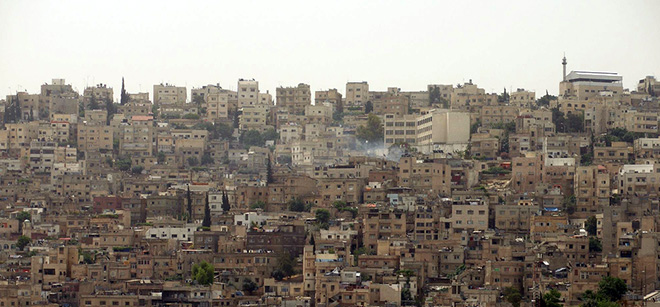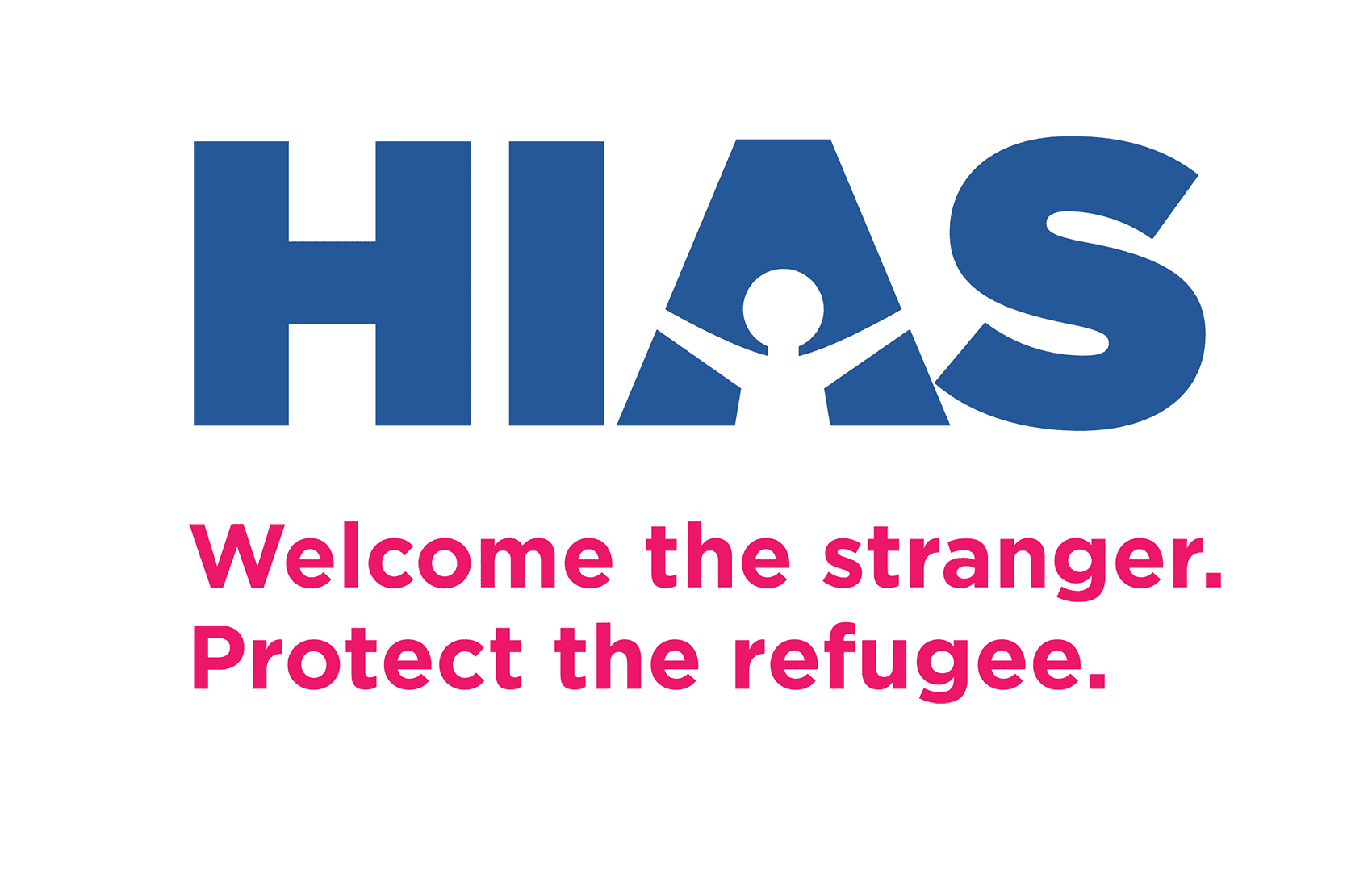Report from the Field: Syrian Refugees in Jordan
By HIAS
Dec 12, 2013

The conflict in Syria has created 4 million IDPs and over 2 million refugees, about 550,000 of whom have sought refuge in Jordan.
Every day, some 5,000 people flee Syria, eager to escape unrelenting violence and the dearth of food, water, and shelter that has left many parts of the country practically uninhabitable. As of October 2013, more than 115,000 people have been killed in the conflict. About four million people have been displaced within the country, and two million Syrian refugees—including a million children—have fled to neighboring states, including Turkey, Lebanon, and Jordan. Medical care, housing, education, and employment are limited for refugees who flee Syria, and their large numbers have posed a tremendous burden on receiving countries.
According to Jordanian Ambassador to the United Nations Prince Zeid Ra’ad Al Hussein, Jordan needs foreign aid to cover the government’s costs of providing education ($800 million) and healthcare ($300 million) to Syrian refugees. The Ambassador has urged the international community to demonstrate a significant commitment to resettling many of the Syrian refugees in Jordan. However, at this point, the international community has offered to resettle only a few thousand of the more than 550,000 refugees currently living in Jordan.
With funding from the Jewish Coalition for Syrian Refugees in Jordan, HIAS' expert on immigration and refugee law and policy, Elissa Mittman, traveled to Jordan this October to begin to identify vulnerable Syrian refugees who are in urgent need of resettlement. Her report reveals a very difficult road ahead for refugees staying in the country for the indefinite future, as well as for those who need to find refuge in a third country like the United States.
Q: What were your first impressions of the Syrian refugee crisis when you arrived in Jordan?
A: Everything I heard from speaking with Syrian refugees, NGOs, and government officials convinced me the war must stop. There must be peace.
Everyone is hurting. Syrian homes and cities have been destroyed. Refugees are continuing to flee across the border, and a number of them are seriously injured and traumatized. Families are being separated across the Middle East. The Jordanian municipal infrastructure is severely stretched to assist these thousands of individuals and their immediate needs.
Q: What is life like for the Syrian refugee? What are the biggest challenges facing these refugees now and in the months ahead?
A: Life is very, very difficult. Former middle class families in Syria are renting single rooms on top of roofs of houses of Jordanians that are often shared among many family members. Refugees don’t have money for rent; they are selling their jewelry and anything else they can just to put a roof over their heads. Their savings are already depleted. They don’t have enough money to buy medicine, diapers, hygiene products, blankets, and milk for babies.
With the onset of winter, the situation will only get worse because Jordan can get quite cold. People need electric heaters and gas—which are very costly—and they simply can’t afford them. Refugees also are not authorized to work in Jordan, which means their financial situations will only deteriorate further.
Q: As someone who has worked with refugees around the world for so many years—Iraqis, Bosnians, Russians, and others—you’ve witnessed a number of refugee crises. What characteristics do you think make this crisis—and the people entangled in it—uniquely challenging to providing relief?
A: The overwhelming majority of refugees are living in urban settings, which can make distribution of relief aid very challenging. When refugees are in a camp, it is far easier to provide aid as there is a defined perimeter within which organizations can operate. Amman, Jordan is spread out, and public transportation is limited. While taxis are relatively inexpensive by Western standards, they are expensive for refugees with no income. I spoke with one refugee who told me that the cost of a taxi to get his medication for diabetes was more than the medication itself so he is going without it. Another refugee who came to speak with me paid the 1 Jordanian dinar (JD) taxi fare (approximately $1.40 USD) to get to me, but she didn’t have the return fare. I gave her 1 JD—how could I let a Syrian mother walk home carrying a five-week old baby along with two children under five in tow after telling me her story?
Q: Is remaining in Jordan a viable long-term option for Syrian refugees?
A: I don’t think so. Remember this is Jordan’s third wave of refugees. First were the Palestinians, then the Iraqis, and now the Syrians. How many people can such a small nation absorb? I understand that the Syrian refugee crisis has already cost the Jordanian government $1.7 billion USD. There are still 100,000 Iraqi refugees living there, in addition to pockets of other refugee populations, including Sudanese and Somalis. In any refugee crisis there will always be populations that simply can’t return home because of their specific circumstances but will never fully integrate into the country to which they fled.
Q: Is resettlement in other countries a possibility for Syrian refugees in Jordan? What countries have opened their doors?
A: The international response has been slow and minimal in relation to the crisis. Germany has offered to accept 5,000 Syrian refugees living in Lebanon. Canada has offered to take 200 refugee referrals from UNHCR (United Nations High Commissioner for Refugees) next year from Jordan and Lebanon, which could include some Syrians. Where is the U.S. commitment? One possible reason resettlement has not been offered yet in greater numbers is that countries in the region are afraid of the “pull factor” or “magnet effect” out of Syria and into their respective countries, particularly if large scale processing for resettlement is offered to a third country, like the U.S., Canada, or Australia.
Q: What is the most pressing issue facing refugees seeking resettlement to the U.S.?
A: This is likely the worst refugee crisis since the Cold War. Despite the great need, the U.S.—the largest refugee resettling country in the world—has accepted hardly any cases for resettlement up to this point. The U.S. government needs to do more. They’ve done it before, and they should do it again.
One thing is clear: even when the war is over, there will be groups of refugees unable to return to Syria; some of them will have strong resettlement grounds and others may be in limbo for a long time to come.
Q: Was there a person you met while in Jordan whose story left a particularly strong impression on you?
A: After speaking to so many refugees and the NGOs serving them, where do I start? The stories I’ve heard have left many lingering images in my mind. The suffering, trauma, and stress are enormous and widespread. Stories of dead children wrapped in wool blankets piled five-high … bombings of civilians in line at checkpoints trying to leave the country … the military filling water wells with dirt and rocks so entire communities can’t survive … I could go on. One refugee showed me a YouTube video of where he used to live and explained that what was once a beautiful street of homes with gardens and jasmine trees is now just rubble. Now in Jordan, he and his family sit in a room with no heat, cracked walls letting in bugs, and no prospect of employment or income. What kind of future will they have? What kind of future will the other 2 million Syrian refugees have?
Q: How is the Jewish community helping this refugee population?
A: The North American Jewish community almost always responds in the face of humanitarian crises and huge displacement. HIAS is one of several Jewish agencies that are members of the Jewish Coalition for Syrian Refugees in Jordan. The Coalition—a 16-member sub-group of the Jewish Coalition for Disaster Relief (JCDR), led and coordinated by the American Jewish Joint Distribution Committee—is assisting Jordanian and international partners operating nonpolitical aid programs providing food, water, shelter, medical care, clothing, and other services. The Coalition also is already supporting the work of the Jordan Red Crescent, World Jewish Relief (for Save the Children), International Rescue Committee, and HIAS in the areas of food distribution, medical programs, and resettlement activities.
However, more funding is required because the need is so great. HIAS has been advocating for robust foreign assistance funding and for the U.S. to begin resettling particularly vulnerable Syrian refugees whose lives are in immediate danger in Jordan due to serious medical issues or other circumstances that place them at particular risk. It’s great that HIAS is part of the Jewish community’s response to alleviate some of the suffering of the Syrian refugees.
Q: What are some of the immediate and long-term consequences for Jordan?
Jordan has been most generous in keeping its border open, but this means that 400–500 people are streaming across daily. Think of the impact on the Jordanian military, who is trying to keep the country safe and stable: rumors abound regarding guns, illegal substances, and other illicit activities that previously would never have entered Jordan. At the same time, border cities have swelled with the flood of Syrian refugees and struggle to meet the housing, medical needs, and employment demands of these new arrivals. I understand rents have increased dramatically—can even the average Jordanian afford them? There are thousands and thousands of children who need to go to school, otherwise Syria will have a lost generation. How will the Jordanian education system respond to this unanticipated surge without burdening its own teachers and students? Several NGOs have established women’s clinics and centers to provide medical exams and psycho-social counseling to those who have post-traumatic stress or serious health problems, or who have experienced sexual or gender-based violence. Jordan simply did not have the resources to meet this demand.
There is so much that needs to be done, and so much more we can do to support Jordan. The government and people of Jordan have accepted an incredible burden by keeping their border open to refugees; the international community has the moral obligation to support Jordan with the Syrian relief effort. A strong and stable Jordan is key to regional stability.

